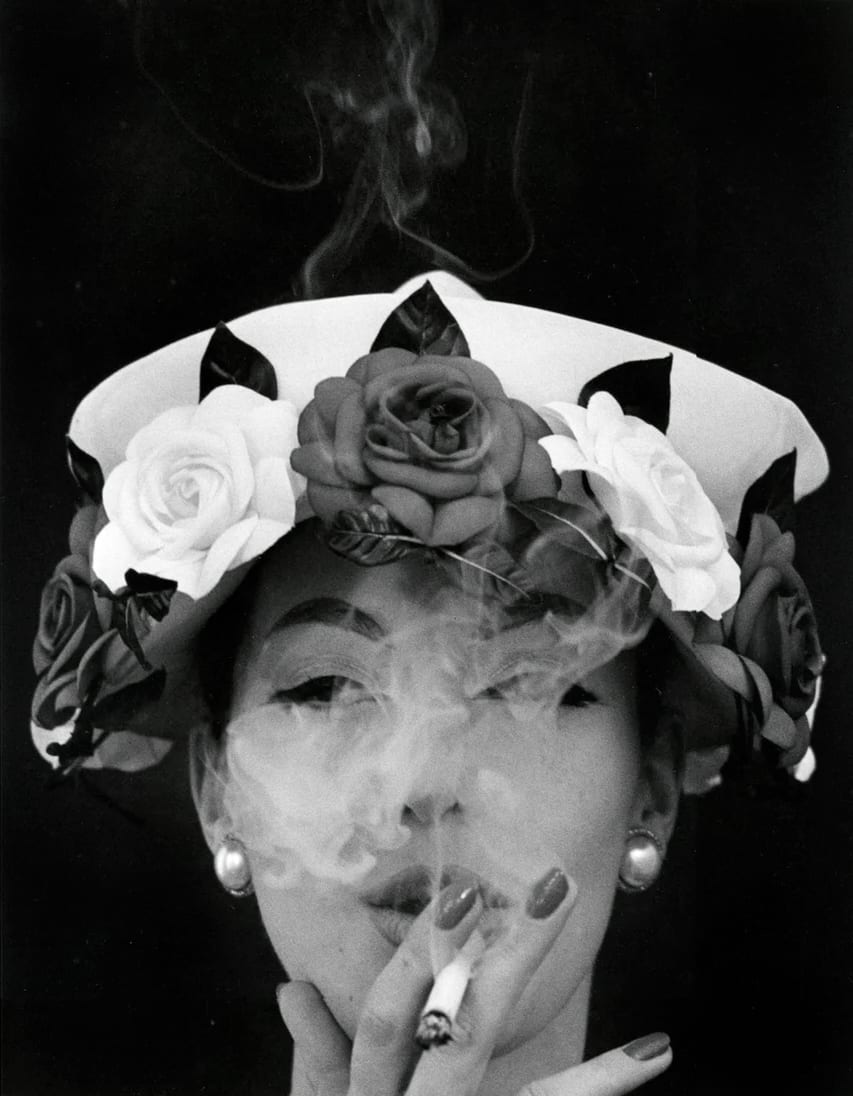A Father of Street Photography
A self-exiled American living in Paris, New York native William Klein gained notoriety as one of the “fathers of street photography.” Klein’s contributions to fashion photography provided a seminal influence of unfiltered bounds. They added a raw, exciting spontaneity to the genre. Establishing himself as one of the most influential photographers of the 20th century, William Klein’s creative pursuits as a trained painter and filmmaker, helped him use the sharp wit of street attitude and the refined sophistication of high fashion to counter the accepted “good taste” rules of photography. William Klein embraced an aesthetic that recalled the high-spirited, stream-of-consciousness beat generation, introducing new perspectives in a visual language subversive to the standard rules of photography.

The Early Years
After graduating high school and enrolling at the City College of New York to study sociology, a young William Klein went on to join the U.S. Army in 1946. After the war, Klein would do army service in Europe, first in Germany and later France. Arriving in France in 1948 and demobilized from the army there, Klein decided to stay in Paris to study painting and pursue a relationship with his future wife, Jeanne. Using a U.S. government scholarship for ex-soldiers Klein enrolled at the Sorbonne, studying under legendary Modernist pioneer Fernand Léger. (He would befriend artists Jack Youngerman and Elsworth Kelly, who also used the G.I. Bill.)
“Legér’s anti-bourgeois call to his students to “get out of the studios and onto the streets” struck a responsive chord in his young pupil… This stress on locating art based on a firm graphic structure in the public domain were the aspects of Léger’s credo, which seem to have aroused the strongest response in Klein’s own work.” – Martin Harrison, Afterword, William Klein, In and Out of Fashion
New York Diary
Klein would return to New York in 1954 and create a “New York diary,” a series of pictures depicting scenes of life throughout the city. The photos, published in a book titled New York, would have a dramatic influence on a younger generation of photographers. Klein would experience early success as a painter. He exhibited in Brussels, Paris, and later Milan, where he would meet the art director for Vogue magazine, and then enter a contract with the magazine in 1955.

The Late 1950’s
In his late 1950’s photographs, s and Smoke + Veil, 1958, William Klein exemplifies his contribution to fashion photography subtly and stylishly. As a collaboration with Vogue magazine and at the behest of Alexander Liberman, director of Vogue who championed artistic experimentation, Klein photographed close up portraits. These photos captured the detail and attitude that characterized his trailblazing posture toward photography.
William Klein took the grainy, black-and-white visuals of the tabloid newspapers, known for their direct and alarming approach to news and urgent matters, and used it to focus on beautiful, elegant models, either walking down busy New York streets or to record side glances and clouds of smoke. This irreverence towards the idealization of fragility and vulnerability in the models within the fashion industry turned the traditions of editorial fashion photography on its head; with Klein, fashion magazines were no longer selling apparel, they were selling attitudes and privileged lifestyles. William Klein’s counteractive stance towards the rules of “good taste” bridged bold inclusiveness into the elitist realm of fashion photography.
Bringing “the Grit of Life” into Vogue
Liberman recognized that Klein would bring what he describes as “the grit of life” into (Vogue’s) sagging pages: “I tried to push people to the extremes of their essence,” he says, “I wanted (Klein) to retain in his fashion pictures some of the violence of his reportages.”
Klein achieved originality both in terms of how he photographed his subject matter and his unconventional techniques. Among others, Klein’s pushing of film speeds, use of film grain, irregular cropping, and playing with depths of field, as well as his influence of painting, graphic arts, and French New Wave cinema, have helped him create a unique and potent voice. His fashion pictures walk the line between ruggedness and refinement. Klein’s images, harshly framed, often blurred and distorted, with a look entirely their own and created by a straight-talking NYC kid/sensitive artist, left an indelible cultural impression in the world of photography.
